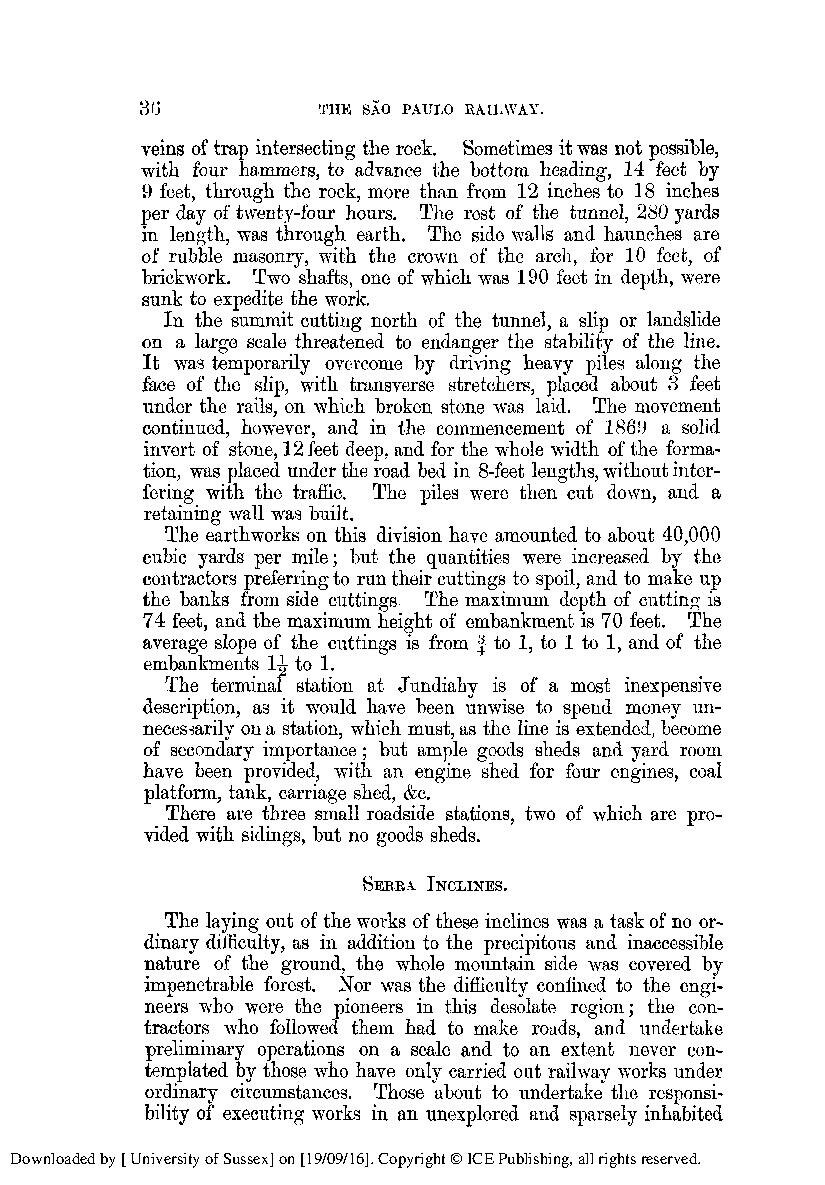veins of trap intersecting the rock. Sometimes it was not possible, with four hammers, to advance the bottom heading, 14 feet by 9 feet, through the rock, more than from 12 inches to 18 inches per day of twenty-four hours. The rest of the tunnel, 2S0 yards in length, was through earth, The side walls and haunches are of rubble masonry, with the crown of the arch, for 10 feet, of brickwork. Two shafts, one of which was 190 feet in depth, were sunk to expedite the work.
In the summit cutting north of the tunnel, a slip or landslide on a large scale threatened to endanger the stability of the line. It was temporarily overcome by driving heavy piles along the face of the slip, with transverse stretchers, placed about 3 feet under the rails, on which broken stone was laid. The movement continued, however, and in the commencement of 1869 a solid invert of stone, 12 feet deep, and for the whole width of the formation, was placed under the road bed in 8-feet lengths, without interfering with the traffic. The piles were thencut down, and a retaining mall was built.
The earthworks on this division have amounted to about 40,000 cubic yards per mile; but the quantities were increased by the contractors preferring to run their cuttings to spoil, and to make up the banks from side cuttings. The maximum depth of cutting is 74 feet, and the maximum height of embankment is 70 feet. The average slope of the cuttings is from 3/4 to 1, to 1 to 1, and of the embankments 1 1/2 to 1.
The terminal station at Jundiahy is of a most inexpensive description, as it would have been unwise to spend money unnecessarily on a station, which must, as the line is extended, become of secondary importance; but ample goods sheds and yard room have been provided, with an engine shed for four engines, coal platform, tank, carriage shed, &c.
There are three small roadside stations, two of which are provided with sidings, but no goods sheds.
Serra Inclines.
The laying out of the works of these inclines was a task of no ordinary difficulty, as in addition to the precipitous and inaccessible nature of the ground, the whole mountain side was covered by impenetrable forest. Nor was the difficulty confined to the engineers who were the pioneers in this desolate region;the contractors who followed them had to make roads, and undertake preliminary operations on a scale and to an extent never contemplated by those who have only carried out railway works under ordinary circumstances. Those about to undertake the responsibility of executing works in an unexplored and sparsely inhabited
